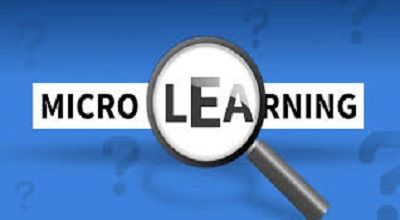Microlearning
Microlearning is an educational approach that involves delivering short, focused bursts of content to learners, typically in the form of small modules or lessons. These bite-sized units are designed to address specific learning objectives and can be consumed quickly. Here’s an example of microlearning:
Example: Language Vocabulary Builder App
Imagine a mobile app designed to help users learn a new language. This app employs microlearning principles to deliver content in short, manageable segments. Here’s how it might work:
- Daily Word: Every day, users receive a push notification with a single word in the target language, along with its translation and audio pronunciation. This takes only a few seconds to read or listen to.
- Flashcards: Users can access a flashcard feature that presents them with a word on one side and its translation on the other. They can quickly swipe through several flashcards during a short break or while waiting in line.
- Mini Quizzes: The app includes mini-quizzes that consist of a few multiple-choice questions about the words users have learned recently. These quizzes test their understanding and reinforce their memory.
- Phrase of the Day: Alongside individual words, the app might present users with a common phrase or sentence in the target language, teaching them practical language usage.
- Audio Practice: Users can listen to short audio clips of native speakers pronouncing the words and phrases they’ve learned. This helps them improve their pronunciation and listening skills.
- Progress Tracking: The app tracks users’ progress over time, showing them how many words they’ve learned, their quiz scores, and other relevant statistics.
The above example demonstrates how microlearning is all about delivering small. Focused pieces of content that can be easily digested and integrated into a learner’s routine. By incorporating regular and consistent exposure to language elements, users can steadily build their vocabulary and language skills without feeling overwhelmed.
Keep in mind that microlearning is not limited to language learning. It can be applied to various fields such as employee training, and skill development. And general education to make learning more accessible, engaging, and effective.
Benefits Of Microlearning
Microlearning offers several benefits that make it an effective and engaging approach to learning. Here are some key advantages:
- Efficiency: Microlearning delivers content in small, focused units. Learners can quickly absorb the information they need without the need for extended study sessions. This can lead to better retention and application of knowledge.
- Flexibility: Microlearning modules are often short and can be accessed on various devices. Making it easy for learners to fit them into their schedules. This flexibility accommodates busy lifestyles and allows for learning on the go.
- Engagement: Short and targeted content is more engaging for learners, as it holds their attention and prevents cognitive overload. Microlearning leverages multimedia elements like videos, animations, and interactive quizzes, enhancing the learning experience.
- Retention: Regular exposure to small pieces of information over time enhances memory retention. The spaced repetition inherent in microlearning helps reinforce knowledge and prevent forgetting.
- Customization: Microlearning allows learners to choose what topics or skills they want to focus on. They can skip content they already know and concentrate on areas where they need improvement, leading to a personalized learning experience.
- Cost-Effectiveness: Developing microlearning content can be more cost-effective than creating lengthy courses. It requires less time and resources, making it an attractive option for organizations with limited budgets.
- Application and Transfer: Microlearning content often emphasizes real-world applications, making it easier for learners to apply what they’ve learned in their day-to-day tasks. This immediate relevance enhances the value of the learning experience.
Extra Benefits
- Learner Confidence: The bite-sized nature of microlearning can boost learners’ confidence as they see progress quickly. This positive reinforcement encourages them to continue learning.
- Accessibility: Microlearning is well-suited for remote and mobile learning. Learners can access short modules from various devices, allowing for learning in different contexts and environments.
- Up-to-Date Content: Microlearning content can be updated and revised more frequently than longer courses. Ensuring that the information remains current and relevant.
- Continuous Learning: Microlearning supports a culture of continuous learning by making it easy for learners to acquire new knowledge and skills incrementally over time.
- Reduced Cognitive Load: By focusing on small chunks of information, microlearning reduces the cognitive load on learners, making it easier for them to process and understand the content.
- Better Completion Rates: The short duration of microlearning modules often leads to higher completion rates compared to longer courses. As learners are more likely to commit to shorter learning activities.
Summary
In summary, microlearning’s advantages stem from its ability to provide relevant and engaging content in a flexible and accessible manner. This makes it particularly effective for addressing the needs of modern learners. Who seek concise and practical learning experiences.
